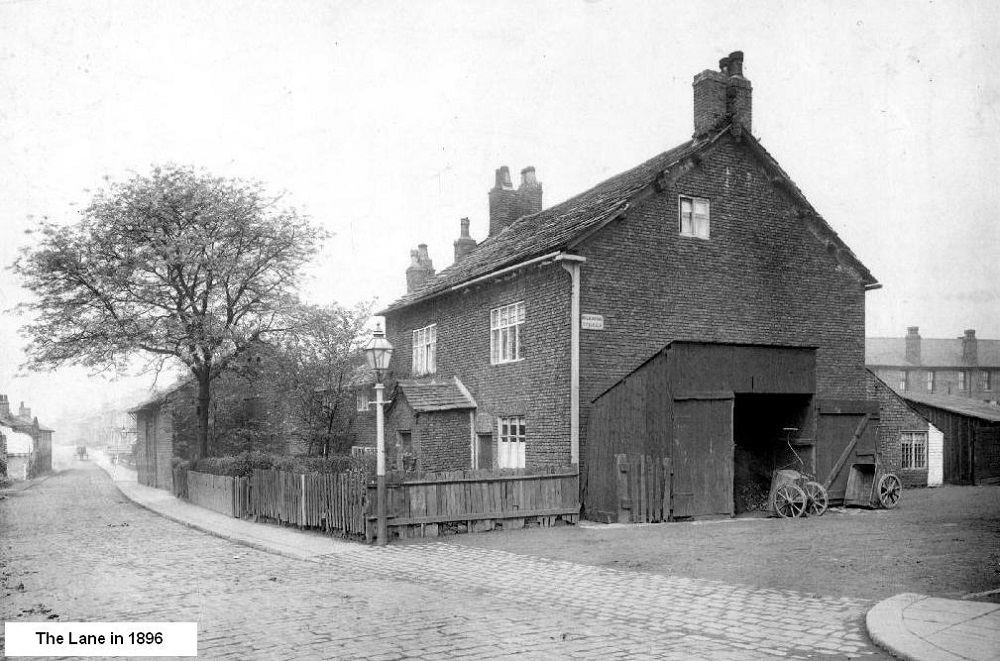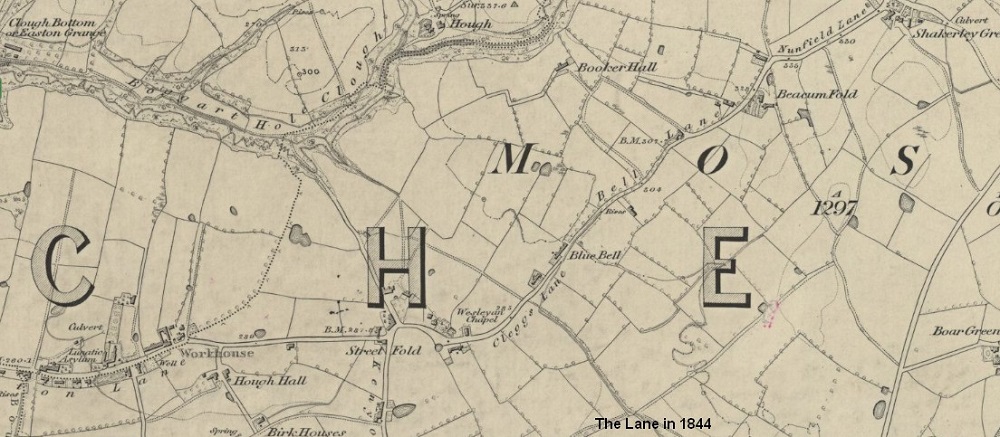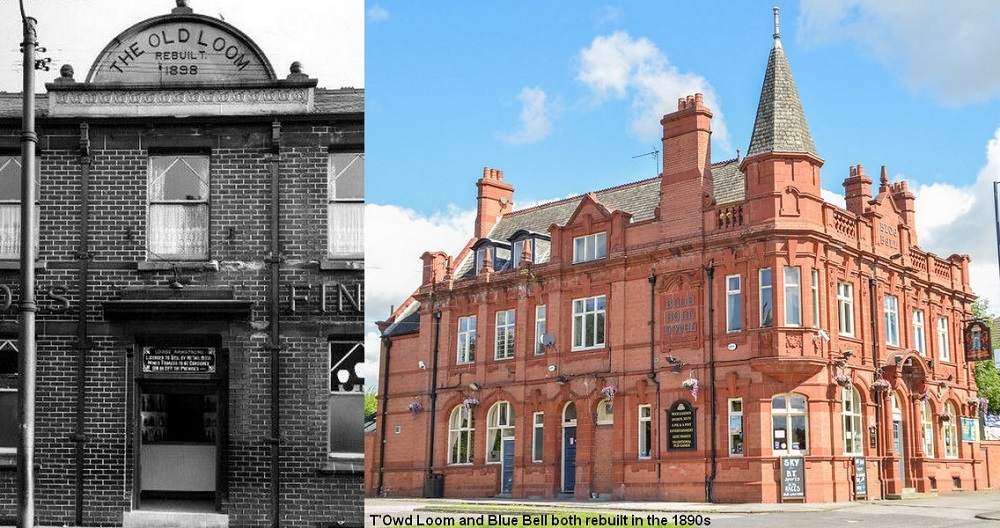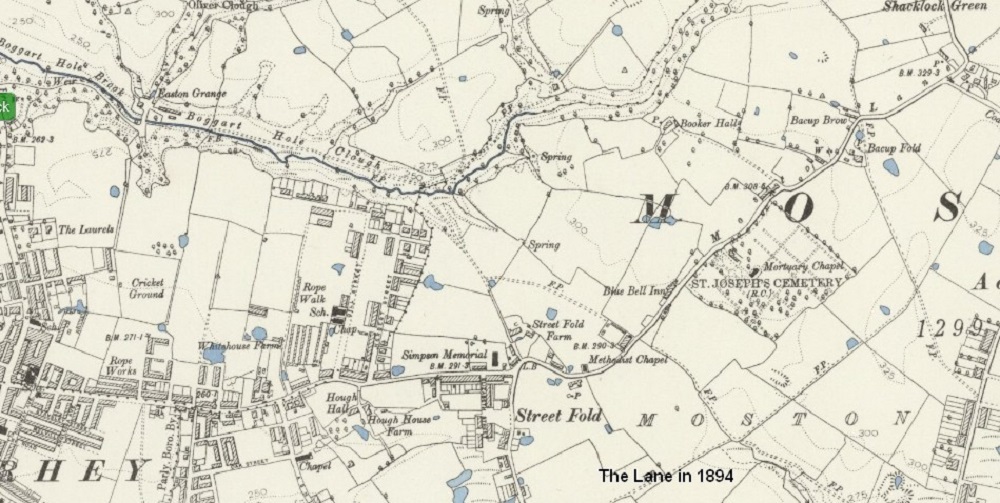Miss Mary Taylor lived in the house where the dog’s home stands today. In 1841, she sent her manservant, John Robinson, to take a record of the inhabitants of every dwelling in Moston. This private census provided a unique snapshot of Moston Lane at a particular moment in history. The hotch-potch of lanes and farm tracks that became today’s Moston Lane, started at Rochdale Road and wound its way to approximately where the Gardeners Arms now stands.

Moston was mostly farm land, but surprisingly it was the domestic hand loom which was more important to the local economy. On the Lane, there were 56 households in total. 34 relied wholly or partially on silk weaving for their income, while only 11 were supported by farming, with the remainder involved in trades such as bricklaying and textile finishing.

Weavers had a reputation for independence, and it wasn’t unusual to find them taking a St. Monday holiday in Boggart Hole Clough.
John Whitehead (known as Jack o’shop) kept a provision store at Street Fold, where he also baked oatcakes. It appears to have been the only place to purchase food on The Lane, with the nearest competition being from Ann Schofield on Ashley Lane (formerly Brass Knob Street).
Beer was to be obtained at the Thatched House, and from Samuel Taylor at the Owd Loom or John Whitehead of the Bluebell. For anything stronger, it was necessary to go to Kenyon Lane where there was a ‘hush’ whisky still.

The small number of given names made nicknames essential. Some of the more picturesque were Owd Yeb, Billy Buttonhole, Old Gimp, and Plutcher. And, because Sarah Holland’s tiny cottage was called ‘the castle‘, she was known to everybody as Sally Castle.
A couple of characters singled out in the census were John Howard, famous for running down (catching) hares twice. And Emmanuel Herd of Great Hurst farm, who claimed to have often sighted the Moston Boggart.
Some years later, an animal carcass believed to be that of the Boggart, was found trapped in briars on Nuthurst Farm. When it was exhibited at the Blue Bell Inn, hundreds flocked to view the creature.

Over the 40 years between Miss Taylor’s census and the nationwide census of 1881, many things had changed in Moston. The domestic silk weavers were all gone, and farm land was starting to disappear under bricks and mortar. The remaining farms on the Lane were mostly in the stretch from Yeb Fold to Toll House and Turnpike farms at Chain Bar.
Incomers who had been born in places as diverse as North and South America, Australia, Italy and Russia, as well as all counties outside Lancashire, had settled in Moston by 1881. These newcomers were a mixture of ‘masters’ and ‘men’.
John Sankey, born Salford, employed 74 men at his match works, as well as a number of women making up matchboxes at home.
John Barber from Castleton Derbyshire, was one of two rope and twine makers living on the Lane, close to the ropewalk.
There was little physical separation of the classes on the Lane. Chain Bar was a typical example, with a mill owner who manufactured cotton sponge (absorbent) cloth, living in close proximity to a coalminer and a lamp man at the colliery.

In the 1841 census, there had been a significant number of females supporting themselves and their families by weaving. In some parts of the country, it was common for middle-class daughters to be kept at home to assist with domestic duties. On the Lane, girls from professional and the better-off classes were often sent out to learn a trade such as millinery or dressmaking.
With daughters out at work, families would sometimes employ a servant, like Mary Rose from Wednesbury, Staffordshire. She worked for Alfred Antrobus, a commercial traveller in provisions, and his wife. The statutory school leaving age was then 12, but Mary was only eleven. She was one of a number of similarly aged girls from the midlands who found employment in Moston.
As the Lane evolved from its semi-rural aspect, a few amenities began to spring up alongside shops and houses. Sergeant Moses Thompson lived at Number 2 Moston Lane, in a house belonging to Lancashire Constabulary. Jane Tickle occupied a cell at the Police station next door.
In 1845, a silk mill started up in a former residential school for pauper boys, which had once been a workhouse with 10 inmates.

At Chain Bar, a primitive Methodist chapel was built in 1864, and the Catholic cemetery was created in 1875. A Methodist chapel school opened at Street Fold in 1881.
The foundation stone for the Simpson Memorial was laid in 1885. The centre’s influence on Moston’s cultural life will feature in The Lane part 2, 1890 to 1959….coming soon.